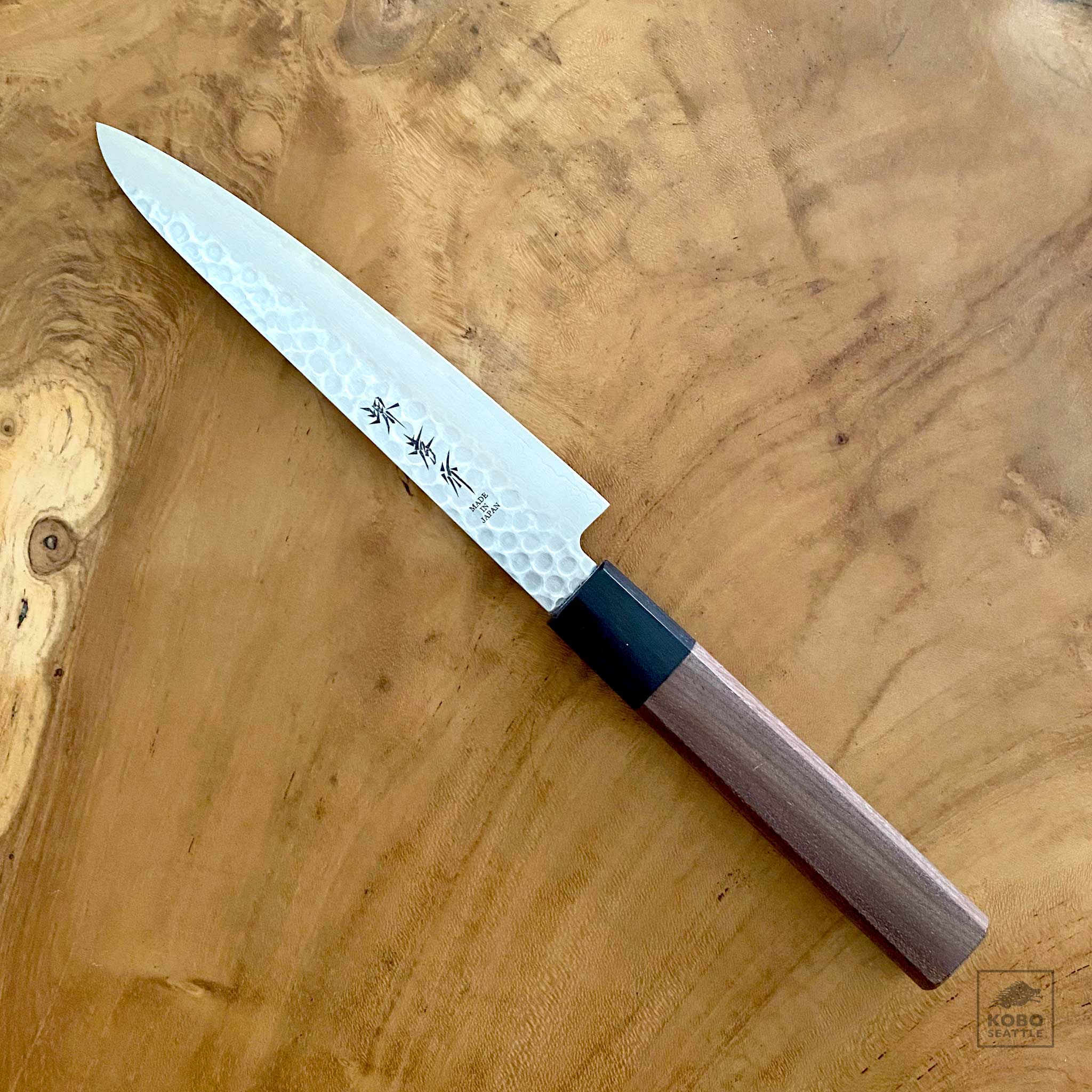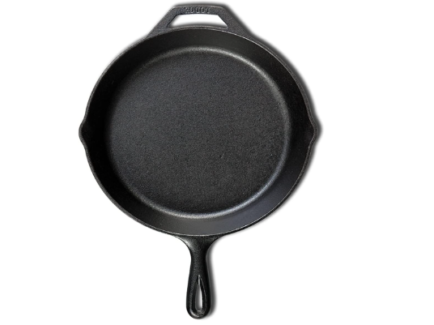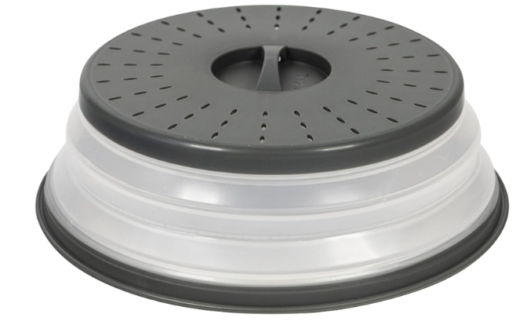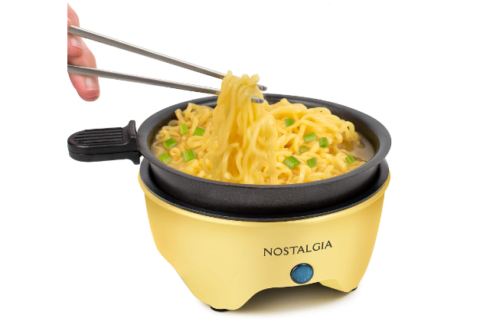As the younger brother of a standard chef’s knife, a...
Read More
A Japanese utility knife, also known as a petty knife, is a versatile kitchen knife that is typically smaller in size than a chef’s knife. It is often used for precision work and smaller cutting tasks such as peeling, trimming, and slicing fruits and vegetables, as well as filleting fish and preparing smaller cuts of meat. Japanese utility knives have a narrow blade that is typically between 4 to 7 inches in length and a sharp, pointed tip that allows for detailed work.
They are often made with high-quality steel and feature a traditional Japanese handle design for a comfortable grip. Japanese utility knives are a popular choice for both professional chefs and home cooks alike, thanks to their versatility, precision, and ease of use.
What is the use of Japanese utility knife?
A Japanese utility knife, also known as a petty knife, is a versatile kitchen knife that can be used for a variety of tasks. Its smaller size and narrow blade make it ideal for precision work and smaller cutting tasks such as peeling, trimming, and slicing fruits and vegetables, as well as filleting fish and preparing smaller cuts of meat.
It can also be used as a general purpose knife for everyday kitchen tasks. Overall, a Japanese utility knife is a great addition to any home cook’s kitchen for its versatility and precision.
What is the ideal Japanese utility knife size?
The ideal size of a utility knife depends on personal preference and the specific tasks for which it will be used. Japanese utility knives typically range from 4 to 7 inches in blade length, with 5 to 6 inches being the most common. A 5-inch blade is a good choice for general utility work, such as slicing and dicing fruits and vegetables, while a 6-inch blade may be better suited for larger cutting tasks or for those with larger hands. Ultimately, the best size for a utility knife is one that feels comfortable to hold and is able to perform the tasks required in your kitchen.
Benefits of using Japanese utility knife size
There are several benefits to using a Japanese utility knife in the kitchen, including:
- Versatility: A Japanese utility knife is a versatile tool that can be used for a wide range of tasks, including peeling, trimming, and slicing smaller items such as fruits, vegetables, and herbs. Its narrow blade and pointed tip make it easy to maneuver and perfect for precise cutting tasks.
- Precision: With its lightweight design and narrow blade, a Japanese utility knife allows for precise cuts and greater control over your cutting tasks. This can be particularly useful when working with delicate or intricate ingredients.
- Comfort: Many Japanese utility knives are designed with ergonomic handles that provide a comfortable grip and reduce hand fatigue during extended periods of use.
- Durability: Japanese utility knives are typically made with high-quality materials, such as high-carbon stainless steel, which are durable and resistant to rust and corrosion. This ensures that your knife will last for many years with proper care and maintenance.
- Aesthetics: Japanese utility knives are often beautifully crafted with unique patterns and designs on the blade, making them a visually appealing addition to any kitchen.
Overall, a Japanese utility knife is a versatile and reliable tool that can be used for a variety of tasks in the kitchen, and its compact size and precise cutting ability make it a great addition to any cook’s knife collection.
What is the difference between a chef knife and an utility knife?
The main difference between a chef knife and a utility knife is the size and shape of the blade. A chef knife typically has a longer and wider blade, ranging from 6 to 12 inches in length, and is designed for slicing, dicing, and chopping larger items such as meats and vegetables.
A utility knife, on the other hand, has a shorter and narrower blade, typically ranging from 4 to 7 inches in length, and is designed for more precise tasks such as peeling, trimming, and slicing smaller items such as fruits and herbs.
Another difference is the weight of the knife. Chef knives are generally heavier due to their larger size and wider blade, which can be useful for tasks that require more force or chopping power. Utility knives, on the other hand, are lighter and more maneuverable, making them a great choice for tasks that require precision and control.
Overall, both chef knives and utility knives are essential tools in the kitchen, and choosing the right one depends on the specific tasks you need to perform. If you frequently work with larger items and require more power and chopping ability, a chef knife may be the best choice. If you need a knife that is more versatile and precise for smaller tasks, a utility knife may be the better option.
How to use Japanese utility knife safely
Here are some tips for using a Japanese utility knife safely:
- Choose the right cutting board: A cutting board made of soft material like wood or plastic is the best choice for a Japanese utility knife. Avoid using hard materials like glass or granite, as they can damage the blade.
- Grip the handle correctly: Hold the handle of the knife with a firm, but not tight, grip. Make sure your fingers are curled around the handle and your thumb is on the back of the blade for better control.
- Use a claw grip: When cutting, curl your fingers into a claw shape and use the fingertips to guide the food while keeping them away from the blade.
- Keep your other hand clear: Always keep your other hand clear of the blade while cutting. Use a cutting board with a non-slip surface to prevent it from moving around while you are cutting.
- Cut away from your body: To avoid accidents, always cut away from your body and keep the knife pointed away from you.
- Use a proper cutting technique: Use a sawing motion when cutting with a Japanese utility knife. Do not chop or use excessive force, as this can cause the blade to slip or damage the food.
- Store the knife properly: When not in use, store your Japanese utility knife in a safe place, such as a knife block or sheath, to prevent it from being damaged or causing injury.
By following these safety tips, you can use a Japanese utility knife safely and effectively in the kitchen.
Factors to consider when choosing the best Japanese utility knife
When choosing the best Japanese utility knife, there are several factors to consider. Here are some key factors to keep in mind:
- Blade material: The blade material is an important factor to consider when choosing a Japanese utility knife. Look for high-quality steel that will hold its sharpness and resist corrosion.
- Blade length: The length of the blade is another important consideration. A Japanese utility knife typically ranges from 5 to 7 inches, but the ideal length will depend on your needs and preferences.
- Blade shape: The shape of the blade can vary between a classic Japanese-style blade or a Western-style blade. Consider which style will work best for you based on your cutting needs and preferences.
- Handle material: The handle of the knife should be comfortable to grip and made from a material that is durable and easy to clean. Look for handles made from wood, plastic, or composite materials.
- Balance: The balance of the knife is important for comfortable and controlled cutting. Look for a knife with a balanced weight distribution between the blade and handle.
- Brand reputation: Choose a reputable brand with a history of producing high-quality Japanese utility knives. Research the brand’s reputation and read reviews from other customers.
By considering these factors, you can choose the best Japanese utility knife that fits your needs and preferences, and will provide you with years of reliable use in the kitchen.
How to clean Japanese utility knife
Cleaning a Japanese utility knife is important to maintain its sharpness and prolong its lifespan. Here are some steps to follow for cleaning a Japanese utility knife:
- Rinse the blade: Rinse the blade with warm water and wipe it clean with a soft cloth or sponge.
- Use a gentle cleanser: If the blade is particularly dirty or has food residue stuck to it, use a gentle cleanser like dish soap to remove it. Avoid using abrasive cleaners or scrubbers that can damage the blade.
- Dry the blade: After washing the blade, dry it with a soft towel. Make sure to dry the entire blade, including the handle and any crevices.
- Store the knife properly: Store the Japanese utility knife in a knife block or on a magnetic strip to keep the blade dry and protected.
- Oil the blade: To prevent rust and protect the blade, you can use a food-safe oil like mineral oil or camellia oil. Apply a few drops of oil to the blade and use a soft cloth to spread it evenly.
By following these steps, you can keep your Japanese utility knife clean and in good condition for years of use in the kitchen.
How to sharpen Japanese utility knife
Sharpening a Japanese utility knife is important to maintain its sharpness and ensure that it performs at its best. Here are some steps to follow for sharpening a Japanese utility knife:
- Choose a sharpening stone: Japanese knives are typically sharpened using water stones. Select a stone with a grit appropriate for the level of dullness of the blade. Start with a coarse grit stone (around 1000 grit) and move to a finer grit (around 4000-6000 grit) to finish.
- Soak the sharpening stone: Place the sharpening stone in water and soak it for several minutes until it is fully saturated.
- Secure the knife: Place a damp towel on the countertop and place the sharpening stone on top of it. Hold the knife handle with one hand and place the blade on the sharpening stone at an angle of about 15-20 degrees.
- Begin sharpening: Starting with the coarsest grit stone, use a circular motion to sharpen the blade, starting at the heel and moving towards the tip. Alternate sides of the blade with each pass, making sure to keep the angle consistent. Repeat this process with the finer grit stone until the blade is sharp.
- Hone the blade: After sharpening, hone the blade by using a honing steel or ceramic rod to realign the edge. Hold the honing steel vertically with the tip on a stable surface and place the blade against the steel at the same angle used during sharpening. Use a light, sliding motion to hone the blade on each side.
- Clean the blade: After sharpening and honing, clean the blade with warm water and dry it with a soft cloth.
By following these steps, you can keep your Japanese utility knife sharp and ready for use in the kitchen.
How to maintain Japanese utility knife properly
Here are some tips on how to maintain a Japanese utility knife properly:
- Hand wash the knife: Always wash your Japanese utility knife by hand with mild soap and warm water. Avoid using abrasive sponges or harsh detergents, as these can damage the blade.
- Dry the knife thoroughly: After washing, dry the knife immediately with a clean towel to prevent rusting. Do not leave the knife wet or in a damp area.
- Store the knife properly: When not in use, store your Japanese utility knife in a knife block or on a magnetic strip. This will protect the blade from damage and prevent accidents.
- Sharpen the blade regularly: A sharp blade is essential for safe and efficient cutting. Use a sharpening stone or honing rod to maintain the knife’s sharpness.
- Avoid cutting hard materials: Japanese utility knives are designed for precision cutting and are not meant to be used on hard materials such as bones, frozen food, or hard cheese. Use a heavy-duty knife for such tasks.
- Use a cutting board: Always use a cutting board when using your Japanese utility knife. Avoid cutting on hard surfaces like granite or marble as this can damage the blade.
- Oil the blade: Applying a thin layer of oil to the blade can help prevent rust and corrosion. Use food-grade mineral oil or camellia oil, and wipe off any excess with a clean cloth.
Troubleshooting about Japanese utility knife
Here are some common issues you may encounter with a Japanese utility knife and how to troubleshoot them:
- Dull blade: A dull blade can make cutting difficult and unsafe. If you notice that your Japanese utility knife is not cutting as smoothly as it used to, it may need to be sharpened. Use a sharpening stone or honing rod to sharpen the blade.
- Blade rust: If you leave your Japanese utility knife wet or in a damp area, the blade may rust. To remove rust, use a rust eraser or a paste made of baking soda and water. After removing the rust, dry the knife thoroughly and apply a thin layer of oil to prevent further rusting.
- Loose handle: Over time, the handle of your Japanese utility knife may become loose. If this happens, tighten the screws holding the handle in place. If the handle is damaged or cracked, it may need to be replaced.
- Chipping or cracking of the blade: Japanese utility knives are designed for precision cutting and are not meant to be used on hard materials such as bones, frozen food, or hard cheese. If you use your knife on hard materials, the blade may chip or crack. To prevent this, use a heavy-duty knife for cutting hard materials.
- Uneven blade: If you notice that your Japanese utility knife is not cutting evenly, it may be due to a bent or warped blade. This can happen if the knife is dropped or stored improperly. If the blade is bent or warped, it may need to be replaced.
Japanese utility knife - FAQs
Here are some frequently asked questions (FAQs) about offset serrated knives:
Japanese utility knives are typically lighter and thinner than their Western counterparts. They also tend to have a sharper edge and a more pointed tip.
Yes, a Japanese utility knife can be used for cutting meat, but it may not be the best choice for larger cuts of meat.
The best way to sharpen a Japanese utility knife is to use a whetstone. Start with a coarse grit and work your way up to a finer grit to achieve a sharp edge.
It depends on how frequently you use your knife and what you are using it for. As a general rule, it’s a good idea to sharpen your knife every few weeks to maintain its sharpness.
Yes, a Japanese utility knife can be used for chopping vegetables, but it may not be the best choice for larger or tougher vegetables like squash or cabbage.
The best way to clean a Japanese utility knife is to wash it by hand with warm water and mild soap. Avoid putting it in the dishwasher, as the high heat and harsh detergents can damage the blade.
Yes, a Japanese utility knife can be used for slicing bread, but it may not be the best choice for harder or crustier breads. A serrated knife may be more effective in those cases.
Conclusion
In conclusion, a Japanese utility knife is a versatile and essential tool in any kitchen. Its smaller size and narrower blade make it perfect for precise tasks such as peeling, trimming, and slicing smaller items such as fruits and herbs. Additionally, its lightweight design and maneuverability make it a great choice for tasks that require precision and control.
When choosing a utility knife, it is important to consider the size of the blade, the material of the blade and handle, and the overall balance and weight of the knife.
By selecting a high-quality utility knife that fits your needs, you can ensure that your kitchen tasks are completed with ease and precision. With proper care and maintenance, a Japanese utility knife can be a long-lasting and reliable tool in your kitchen for years to come.
Related Posts
What is a offset serrated knife used for?
An offset serrated knife is a type of kitchen knife...
Read MoreWhat are Japanese cleavers used for?
A Japanese cleaver, also known as a “nakiri,” is a...
Read MoreWhy Trust Us
You will find what you are looking for at Jody's Bakery. From classic to luxury brands, you'll find both. We will help you to select appliances that fit your needs, budget and lifestyle. Whether you want to stop by to learn more — or plan to make a major purchase — we’ll treat you like family and assist you every step of the way. Shop with us today to receive friendly and experienced help along the way.
















This article really captured my attention! The depth of information combined with the engaging writing style made it a pleasure to read. I’m curious to hear other readers’ thoughts on this topic. Feel free to check out my profile for more interesting discussions!
… [Trackback]
[…] Find More Info here to that Topic: jodysbakery.com/what-is-the-use-of-japanese-utility-knife/ […]
… [Trackback]
[…] Read More on on that Topic: jodysbakery.com/what-is-the-use-of-japanese-utility-knife/ […]
… [Trackback]
[…] Read More here to that Topic: jodysbakery.com/what-is-the-use-of-japanese-utility-knife/ […]
… [Trackback]
[…] Info on that Topic: jodysbakery.com/what-is-the-use-of-japanese-utility-knife/ […]
… [Trackback]
[…] Find More to that Topic: jodysbakery.com/what-is-the-use-of-japanese-utility-knife/ […]
… [Trackback]
[…] Information on that Topic: jodysbakery.com/what-is-the-use-of-japanese-utility-knife/ […]
… [Trackback]
[…] Find More Info here to that Topic: jodysbakery.com/what-is-the-use-of-japanese-utility-knife/ […]
… [Trackback]
[…] There you can find 91572 additional Info to that Topic: jodysbakery.com/what-is-the-use-of-japanese-utility-knife/ […]
… [Trackback]
[…] Read More here on that Topic: jodysbakery.com/what-is-the-use-of-japanese-utility-knife/ […]
… [Trackback]
[…] Here you can find 36835 more Information on that Topic: jodysbakery.com/what-is-the-use-of-japanese-utility-knife/ […]
… [Trackback]
[…] Information on that Topic: jodysbakery.com/what-is-the-use-of-japanese-utility-knife/ […]
… [Trackback]
[…] Info to that Topic: jodysbakery.com/what-is-the-use-of-japanese-utility-knife/ […]
… [Trackback]
[…] Read More here on that Topic: jodysbakery.com/what-is-the-use-of-japanese-utility-knife/ […]
… [Trackback]
[…] Find More Info here on that Topic: jodysbakery.com/what-is-the-use-of-japanese-utility-knife/ […]
… [Trackback]
[…] Read More Information here on that Topic: jodysbakery.com/what-is-the-use-of-japanese-utility-knife/ […]
… [Trackback]
[…] Here you can find 81775 more Info on that Topic: jodysbakery.com/what-is-the-use-of-japanese-utility-knife/ […]
… [Trackback]
[…] Find More to that Topic: jodysbakery.com/what-is-the-use-of-japanese-utility-knife/ […]
… [Trackback]
[…] Find More Information here on that Topic: jodysbakery.com/what-is-the-use-of-japanese-utility-knife/ […]
… [Trackback]
[…] Info on that Topic: jodysbakery.com/what-is-the-use-of-japanese-utility-knife/ […]
… [Trackback]
[…] Info on that Topic: jodysbakery.com/what-is-the-use-of-japanese-utility-knife/ […]
… [Trackback]
[…] Read More Info here on that Topic: jodysbakery.com/what-is-the-use-of-japanese-utility-knife/ […]
… [Trackback]
[…] Find More on to that Topic: jodysbakery.com/what-is-the-use-of-japanese-utility-knife/ […]